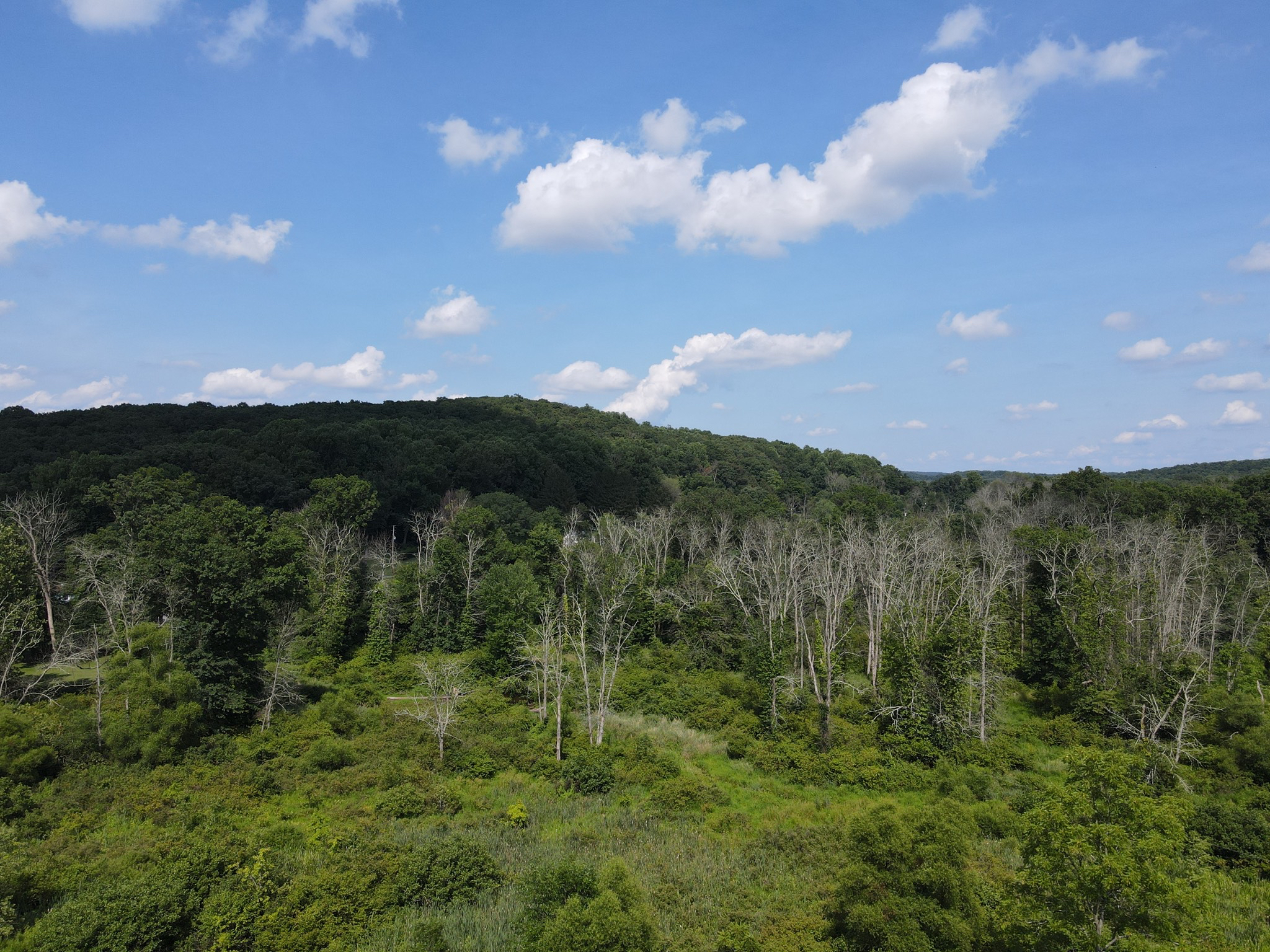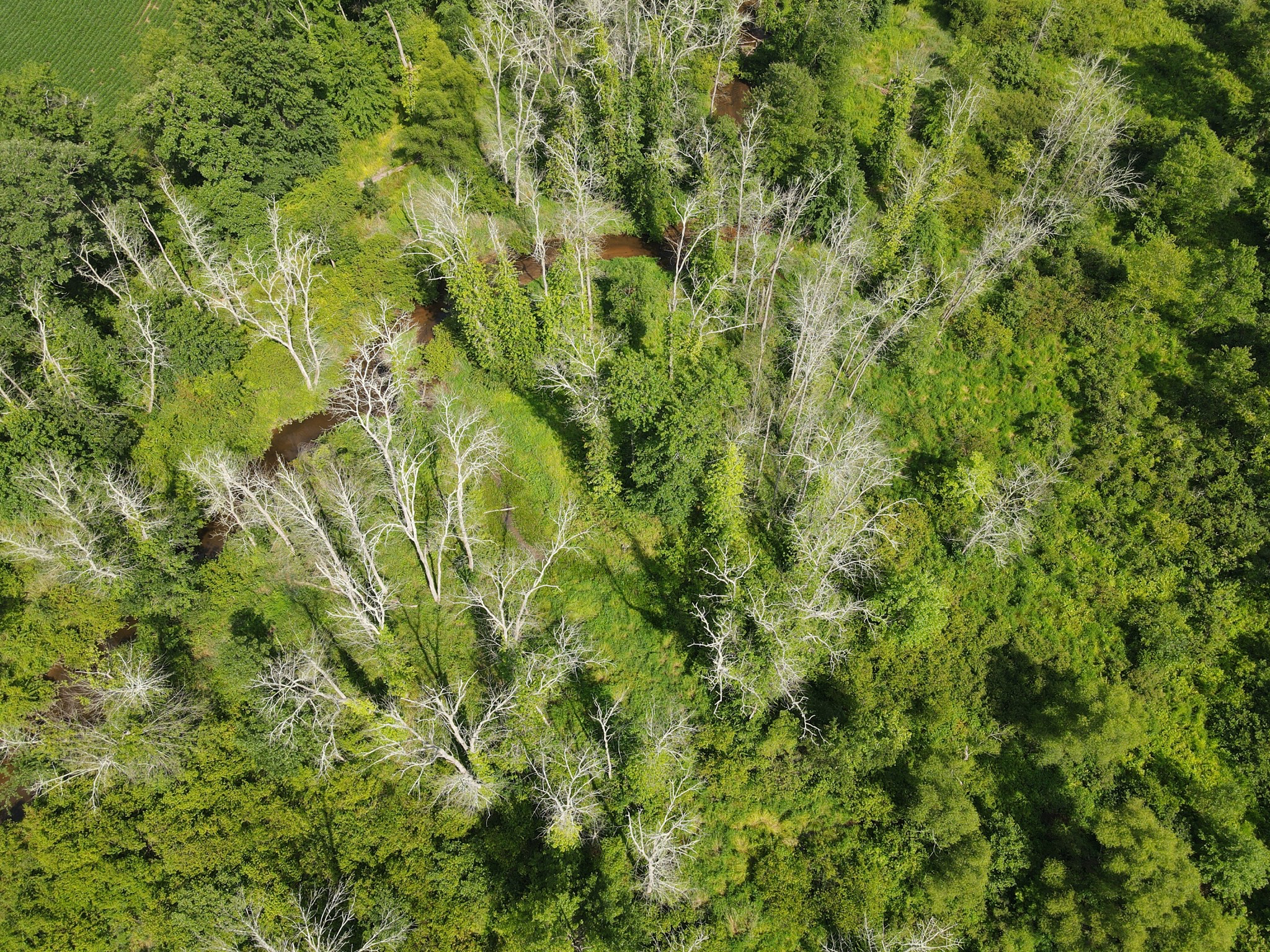Crow’s Nest: Emerald ash borer’s effect
By Daniel Barringer, Preserve Manager.

We’ve seen and discussed what the introduced insect, emerald ash borer (for short, EAB; Agrilus planipennis) can do to individual ash trees. (My first comments that are still in the blog archive are from when the invasive insect was first found in Pennsylvania in 2012.) There are many other entries: Goodbye Old Friends (2015), our early surveys of ash trees along our roads before EAB arrived (2015), early ash tree management efforts (2016), starting to remove ash trees along our road sides (spring 2017), bracing for the borer’s imminent arrival (summer 2017), continued work (December 2017), more removals (January 2019), and an update on progress, including a map of removals, earlier in 2020.
Absent some kind of intervention, emerald ash borer will kill the ash trees, perhaps with very few exceptions. But what does that look like on the landscape scale?

Emerald ash borer first showed up in North America in Michigan in 2002, probably an accidental introduction in wood packaging material, and has worked its way across the country, and is now found in more than 30 states. I am treating about a dozen trees here on the preserve, and we are about 2/3 of the way through removing our ~230 ash trees along our roadsides, but the rest are being left to succumb to the insect, which has larvae that eat their way through the cambium under the bark, girdling the tree and causing it to die.

Ash trees are common on floodplains and so that’s where their dying is most apparent. French Creek meanders through the photo above. The green on the trunks of the trees is our native poison ivy, Toxicodendron radicans, which has been released from the shade of the canopy which is now missing.
As with other landscape-level and global changes, there will be “winners” and “losers.” While we normally value shade along our stream sides as a way of protecting water quality, the effect here is not unlike what would occur from flooding due to beaver dams, and the wet meadows that will occur here now support other species than would have been found in the forested streamside. And over time other trees will establish themselves here, so it likely will be forested again—but different than before.
